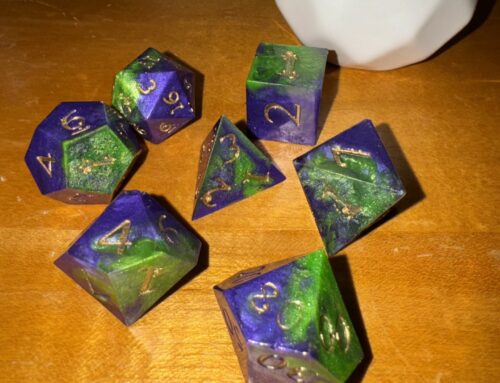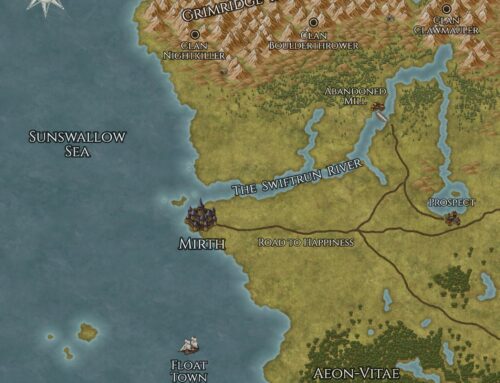
It all comes down to this.
After months of following a methodical approach to planning my novel, it’s finally time to put fingertips to keyboard and actually write The Lost Tale of Sir Larpsalot.
Before I reveal whether the Snowflake Method properly equipped me for smooth sailing through my rough draft, here’s a quick review of all I did to prepare for this ultimate writing exercise:
- Write a one-sentence summary of your novel — After a dozen attempts to tell my store in a single statement, I came up with a summary I was satisfied with: “Five teen larpers must become the fantasy warriors they pretend to be when a confused wizard summons them to complete an impossible quest in another world.”
- Expand the single sentence into a full paragraph — My handful of sentences outlined the complete plot arch, including at least three disasters for the heroes to overcome.
- Create your main characters — The five short character profiles I created tied more into the plot than their personalities, including such information as their goals, conflicts, and epiphanies.
- Expand each sentence of the summary into a full paragraph — Piecing together this one-page skeleton was relatively easy, thanks to the three steps that came before it. And there was plenty of creative opportunity to put some meat on the bones.
- Hear your characters’ stories in their own words — I worried that telling the same story from five separate points of view would be tedious, but this activity proved to be both rewarding and fun.
- Transform your one-page summary into a true synopsis — Most authors dread making a synopsis, but building one from the single-page outline in Step 4 proved to be far less daunting than what I experienced for prior projects.
- Make sure your main characters cast a shadow — Getting to know my characters and making them as rich and realistic as possible has always been my forte. This time around was no different.
- Outline all scenes in a spreadsheet — As much as I love using spreadsheets to stay organized, Excel proved to be a less-than-effective tool for outlining my story. I ended up doing a hybrid between what was spelled out in Step 8 and Step 9.
- Create a true chapter outline — While deciding every broad stroke of a book before writing the first scene can be a challenge, I live and die by my chapter outlines; given all the steps that came before, I was in an excellent position to put one together for this novel.
Which brings me to Step 10…
Step 10 of the Snowflake Method
What Randy recommends
I took these notes from Mr. Ingermanson’s article about the Snowflake Method:
Step 10: Write the first draft.
- The writing should be a lot faster—and cleaner—than past efforts
- (This is the fun part!)
- Total time: ???
What David did
With chapter outline in hand, I jumped in headfirst.
On Sept. 3, 2019, I wrote the rough draft of the first chapter and kept going from there, averaging about three chapters per week. Exactly three months after I began, I finished the final chapter of The Lost Tale of Sir Larpsalot.
While I can’t say definitively that this was the quickest first draft I ever composed, it certainly ranks among my speediest first passes. Was it cleaner than past efforts? Possibly. My beta readers gave me plenty to consider, but even so, my second draft was more about making moderate edits than rewriting large passages—or entire chapters, for that matter.
Partly because this YA portal fantasy is less complex and shorter than my past novels, getting from first draft to the final version took far less time than usual. And I have to admit writing a rough draft, for me, is far more fun when I have a clear glimpse of the landscape ahead, instead of scrambling to come up with character traits, plot points, subplots, transitions, and themes on the fly.
The verdict
Would I recommend the Snowflake Method to other novelists?
Yes…with a few caveats:
- If you’re a “pantser”—someone who typically does little pre-writing and just starts penning the story when the spirit moves you—the Snowflake Method provides a logical, step-by-step structure for the planning process. By tackling these bite-sized exercises, you might find this to be an excellent way to see if becoming a plotter might be right for you.
- If you’re already a plotter—someone who makes a roadmap of some kind which they following from “Chapter 1” all the way to “The End”—the Snowflake Method can help you refine your process, possibly making it more efficient or effective. If you already know what works well for you, I encourage you to make personal modifications as needed; build upon what you know works rather than blowing it up and/or replacing your approach entirely.
- Be warned: the Snowflake Method doesn’t specifically leave room for things like research, word building, or miscellaneous brainstorming. You have to come into this approach with a pretty strong/vetted idea to be able to hit the ground running. Be prepared to take a few timeouts in between steps to allow yourself time for discovery.
I fully expect I will use a version of the Snowflake Method for my upcoming novels, and I thank Randy Ingermanson for sharing his process with us.
As for The Lost Tale of Sir Larpsalot itself, I’ll be adding more content to this website in the months to come. Publication of the paperback and Kindle editions are slated for early October 2020, and if I can muster the courage, I’m considering narrating the audiobook for release some time in 2021.
Thank you for following me on this adventure in novel planning. I can’t wait to share the fruits of my labor—Good Company’s quirky quest—this fall!



Leave a comment